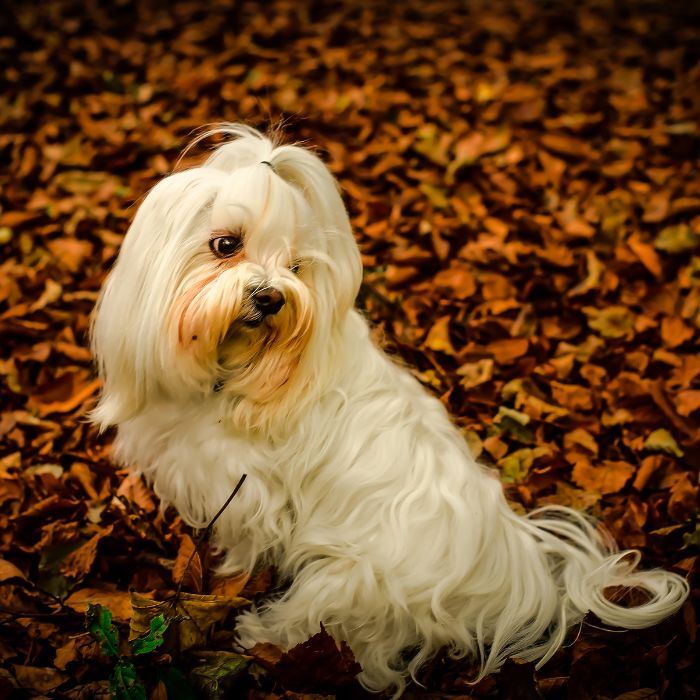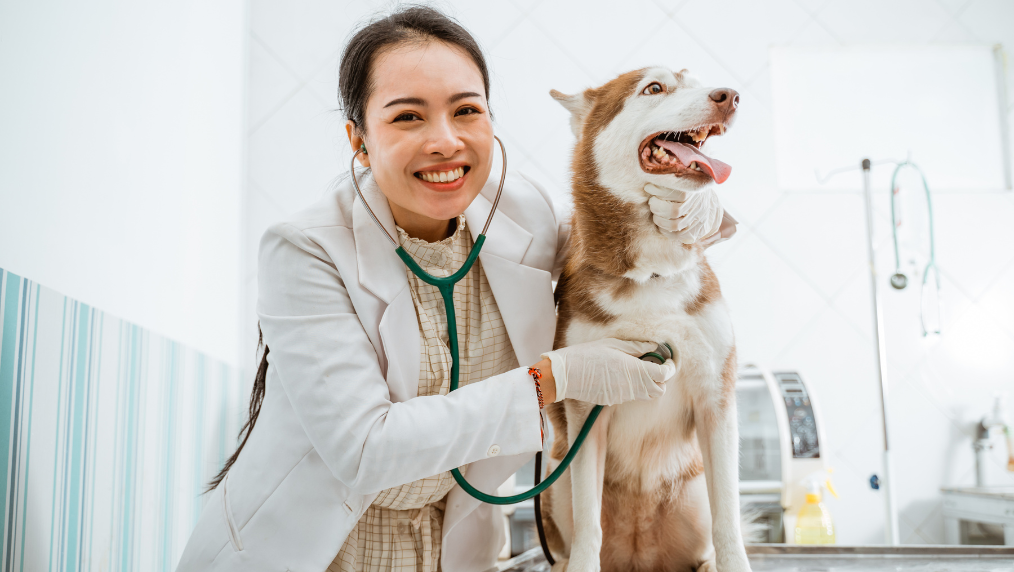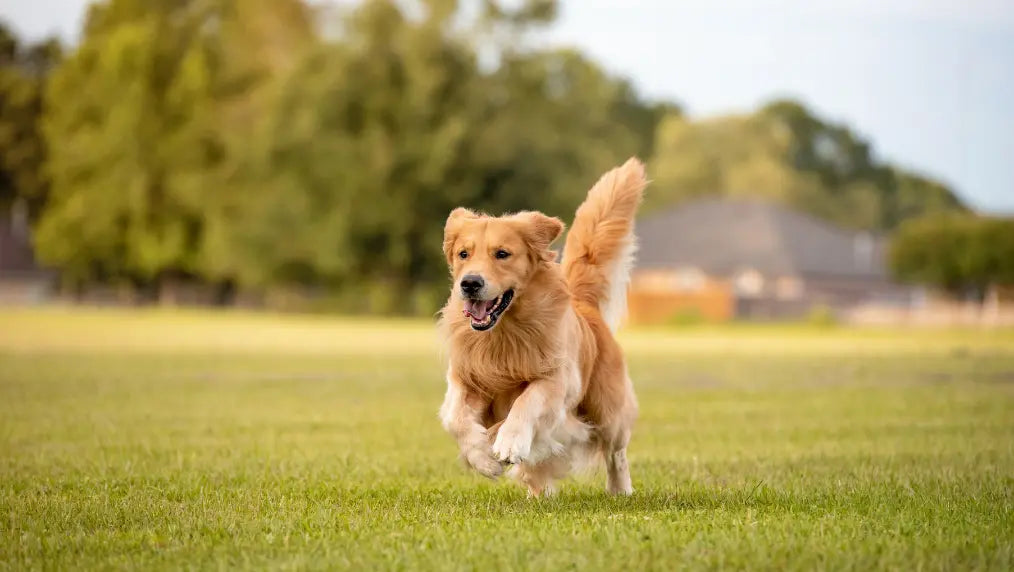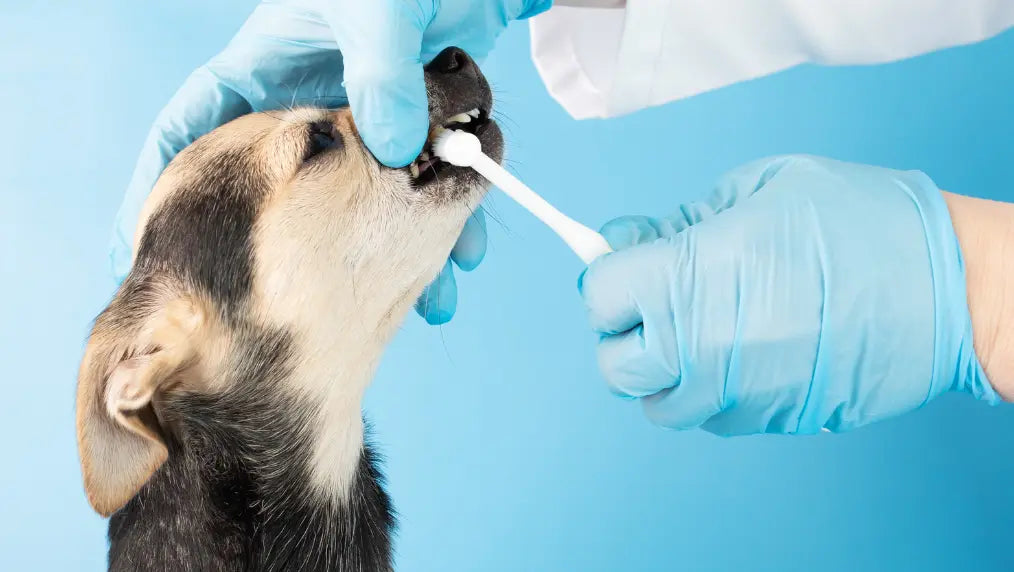Summer is still in full swing, but the fall weather will be here before you know it! When the leaves start turning and the weather is cooling, fall can feel like a welcome break from the summer’s hot and humid temps.
But not everything is sugar and pumpkin spice about the fall season, especially for our dogs. Autumn can bring about some unique safety measures and considerations for our canine friends. We’ve written some important fall safety tips down below to keep your dog healthy and happy this season, so you can practice caution for whatever fall brings.
Use Caution Around Essential Oils and Open Flames

In recent years, essential oils have become a very popular way to get some amazing fall scents into your home, in addition to candles or open flame, but they can also create some potential issues for dogs. Out of caution, don’t place undiluted oils directly on your dog, and never let them ingest anything with oils.
If you use a diffuser, keep it in a central room, and allow your dog to leave the room if the smell is too strong for them. Some essential oils known to be harmful for dogs include cinnamon, pine, and peppermint.
READ: Essential Oils for Dogs: An Insider’s Guide to the Skin and Coat Care Benefits
When it comes to candles, never leave one burning when the room is unattended, or in a place that a pet could gain access. House fires are more common in the fall and winter. Studying fire safety tips and keeping a fire extinguisher handy in your home could help avoid serious injuries and keep your entire family safe. Carbon monoxide detectors and smoke alarms are the best safety precautions to double check as we enter this season.
Clean Up Any Spice Spills
If the arrival of fall gets you in the season to bake up some treats, keep popular fall spices out of reach of your dog. These can cause serious stomach upset, diarrhea, kidney problems, and a host of other side effects. There are many fall safety tips and precautions that come to mind for pets in a kitchen setting.
Autumn foods are very tasty, but most are actually dangerous for dogs and other pets. Because of this, it's best to keep seasonal food out of your dog's reach. Halloween candies and chocolates (including sugar free sweets with xylitol) can cause serious health issues and risk. Thanksgiving foods are hazardous too, such as those made with garlic and onions (which are toxic to dogs), fatty foods (that can cause life-threatening pancreatitis) and turkey bones (which can lead to choking, stomach obstruction or pierced intestines).
Even though nuts are tasty all year round, they are traditionally an autumn food and so many people buy more during the Fall. But nuts are not the best snack for your dog. While a few occasional non-toxic ones shouldn't cause your dog any problems, it's a good idea to avoid them. This is because they are high in fat (dogs have trouble digesting fat and it can lead to pancreatitis, which can be life-threatening), calories (which can lead to weight gain or obesity) and often contain additives (coatings, salt and sweeteners) that are toxic. They can also be a choking hazard or cause intestinal obstruction and have mold, which can be toxic.
Other ways to keep your dog safe around food include barricading the kitchen (if possible), throwing away any garbage immediately and securing the trash can. In addition, advise guests not to feed your dog, inform them of what dogs can't eat and watch children around food. If you think your pet has ingested something toxic, call your vet or a poison hotline, like ASPCA Poison Control Center.
Pro Tip: Give your dog something to work on (such as made-for-dogs chewing bones, like bully sticks, or puzzle toys) during dinner so they'll be occupied during the meal.
Also Read - Tips for Brushing a Dog According to Coat Type
Keep Choking Hazards Out of Reach
If you’re one to break out the holiday decor, keep any small objects, hazards or electrical wiring out of reach of your dog’s eager nose in order to prevent any choking hazards. If you have kids, another culprit to watch for are new school supplies floating around – think pencils, markers, and glue…choking hazards abound!
Cleaning supplies, sharp tools, or any pile of dangerous objects should be kept in a place where your pooch cannot access them.
Antifreeze Season Begins

Fall means temperatures are dropping and many people take this time to start winter car maintenance. That usually involves antifreeze, which is very dangerous to pets because of the toxic ingredient ethylene glycol. Many pets are attracted to the chemical because it smells sweet to them, despite being odorless to us.
Because of all this, it's important to keep antifreeze securely stored out of your dog's reach. In addition, clean up any spills or leaks immediately. For extra precautions, barricade your pet from the area of the spill or leak for several hours to ensure it's cleaned up and dry. You can also opt to use more "pet-safe" antifreeze products that contain propylene glycol. While these aren't completely nontoxic, they have a wider margin of safety. Lastly, be mindful on walks and don't let your dog drink from standing puddles. Not only are these breeding grounds for bacteria, but they could contain antifreeze that leaked from cars.
If you believe your dog has ingested antifreeze, seek vet care immediately, as damage can occur in mere hours and fatality within 36 to 72 hours. The first symptoms can show up as soon as 30 minutes after ingestion. Your dog may appear to improve 12 to 24 hours after, but they are still at risk during this time period, often experiencing dehydration and kidney damage (kidney failure can occur within 36 to 72 hours). The lesser the exposure and the faster the treatment, the better the prognosis.
Pro Tip: If ingested, bring the antifreeze package to the vet so they have more information and can better determine a treatment plan.
Watch Out For Dreaded Fall Allergies

Fall is a time when many plants release their pollen into the air…and it’s not just humans that can get the sniffles! Dogs face seasonal allergies as well. Watch if your pup starts to experience itchy skin, sneezing, and watery eyes – these could be indicators they’re dealing with side effects from pollen, fleas, dust mites, or other seasonal allergens. Doing a little fall cleaning for your dog, such as washing their dog bed, food bowl, and general cleaning around the house could help reduce these allergies.
Keep An Eye on the Ground
Around this time of year, many people put out fertilizers on their lawn. While it’s great for the grass, it can spell trouble for dogs, so it’s important to avoid areas that have just recently been fertilized. Fertilizer exposure can cause fever, diarrhea, seizures, and in serious cases, death. Even walking in these areas can create problems, as your dog may lick his/her paws later, allowing it to get into their system.
Practice Nighttime Safety
Speaking of walks…it’s smart to practice some general safety as it gets darker earlier in the evenings. The shortest days of the year are approaching and that means it gets dark earlier. This can impact your daily walks, whether you go in the morning or evening. To avoid any issues, you and your dog can wear clip-on lights or reflective gear to notify vehicles and cyclists of your whereabouts (these may ward off coyotes as well). Ensuring your dog is visible can also be helpful in case they get loose. And if your area doesn't have street lights, you may want to carry a flashlight to better see your surroundings. This can reduce the chances your dog eats something they shouldn't.
Consider getting a light-colored or reflective dog collar and leash for your dog to wear, especially if they’re smaller and/or have darker coats. Even a light, brightly colored bandana can help your dog stand out in the dark. Some other safety tips include wearing reflective clothing, keeping your pup on a shorter leash, sticking to well-lit areas if possible (or keeping a flashlight with you), and sticking to walking routes you both know well (if your dog’s not a big fan of walking at night, this can help ease their anxiety, too). And don’t forget to wear light-colored clothing yourself!
Fall Foliage And Flora
Fall foliage is a hallmark of autumn - who doesn't love the vibrant colors and that crunch under your feet? But fallen leaves can actually be hazardous to our dogs. Especially wet leaves. Not only can they be hiding fleas, ticks, snakes and other critters but ingestion can cause gastrointestinal upset. Furthermore, there are trees, plants and flowers out there that are toxic to dogs. Some examples include Yews, Autumn crocus and Lillies. Many of these can cause a wide range of issues from vomiting and diarrhea to heart arrhythmias and cardiac arrest to kidney failure and death.
While it can be fun to play in a pile of fall leaves, especially when you have kids, keep in mind that they bring dangers to our beloved animals.
It's a good idea to familiarize yourself with your area's toxic foliage and flora (you can find lists on the internet, such as ASPCA's list of toxic plants). In addition, check your yard daily and remove anything fallen or rotten, as well as bare branches and sticks that could catch on your dog. Also, keep an eye out on walks and maintain control over your dog to ensure they don't eat anything toxic. If your dog ingests anything that causes illness or distress, contact your vet as soon as possible.
Get Prepped for Fido's Holiday Plans Early
It will be cold before we know it, which usually means holiday and travel plans are in the works! We often book things for our kids, but for the canine members of the family, it's important to also have plans in place.
If you know you’ll be out of town for the upcoming holiday season, now is a good time to start looking into options for your pup if they need to stay behind. Perhaps it's a house sitter that you need, or a pet-friendly daycare. It's always a great idea to have a plan in place as early as right now, so that your family can have peace of mind throughout the winter.
Also Read - Soothing Thunder Remedies: A Guide for Anxious Dogs
Conclusion
Enjoy the love, memories, and unbeatable adventures that arrive with the autumn breeze with your pets. Just as the falling leaves mark seasonal change, don’t be surprised to find that your pet’s needs may change as well during this time of year. Keep your pets safe and prevent accidents before they happen. These fall safety tips are good to keep in mind the next time you and your furry friend head outside.
We hope your fall is filled with friends, family, and more treats than tricks! Understanding autumn hazards and how to avoid them is essential for both you and your pet to safely enjoy fall.





